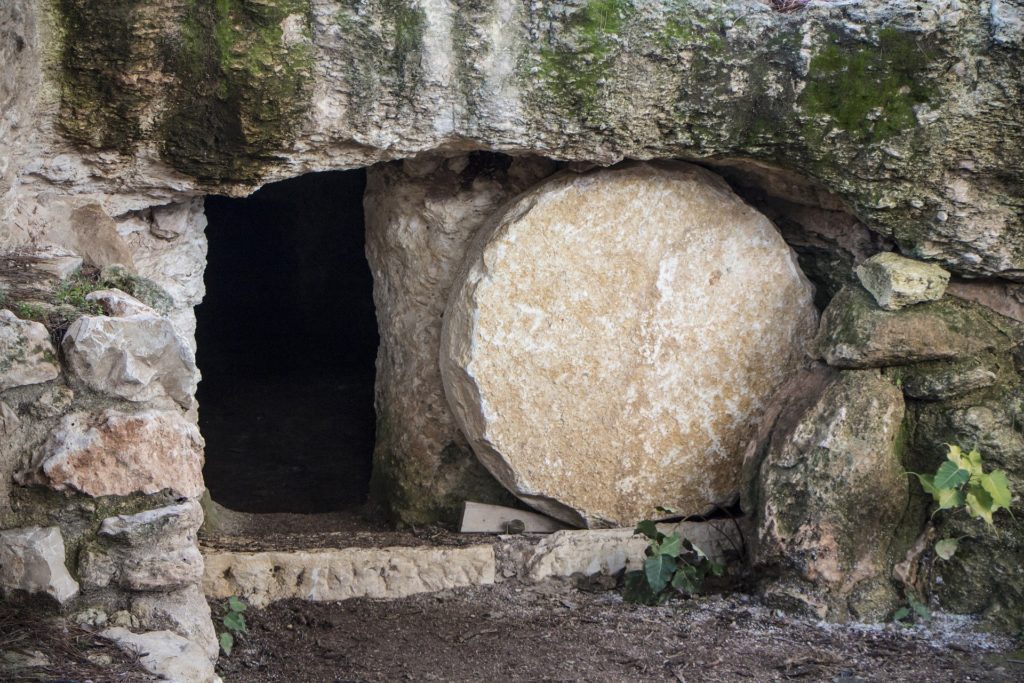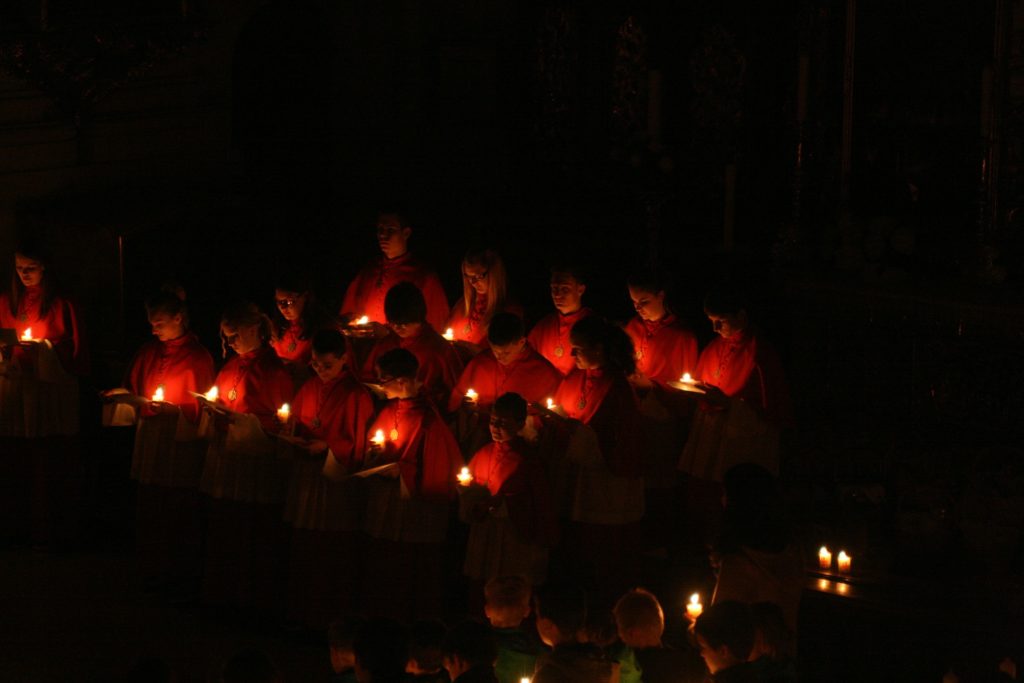
Because of this year’s COVID-19 epidemic most of the United States (and much of the world) finds itself with a public Easter mass for the first time in anyone’s memory. This does not mean Easter will not be celebrated. Nor does it mean the darkness will not be parted by the light of Jesus Christ. Easter, much like Christ, lives on through His Church and His people here on Earth. Where ever more than one calls His name (no matter how much space, time or distance there is between them for God is everywhere and always) the Lord is present. Let us therefore rejoice in his love this Easter and celebrate His Resurrection nevertheless and maybe even more.
Easter Vigil mass in the Catholic tradition is the longest mass of the liturgical year. Depending on the format used by the celebrating priest it can come in at anywhere between 1.5 and 2.5 hours. This is not most kid’s favorite mass most years, but in a year without mass you may be surprised how much they (and you) miss it. The Easter Vigil mass is also called called the Paschal Vigil or the Great Vigil of Easter. It is also referred to as Holy Saturday as it takes place in the late evening of the Saturday before Easter after sunset is completed. This mass is a solemnity. A solemnity is sometimes referred to as a “eve” so with this mass it would be considered “Easter Eve.” Like most solemnities it is a mass of waiting in fervent anticipation for what is to come tomorrow on the feast day and a celebration all that brings.
In the Roman Rite liturgy, the Easter Vigil consists of four parts:
The Service of Light
The Liturgy of the Word
Christian Initiation and the Renewal of Baptismal Vows
Eucharist
The mass traditionally begins outside the church where a fire is lit and then used to light the Paschal candle. This Paschal candle will be kept in the sanctuary next to the Lectern where the Gospel is proclaimed throughout the year until the next Easter Vigil. The Paschal candle reminds us that Christ is the “light and life” for us all year. That light is born out of the Resurrection of Jesus Christ on Easter and is a direct result of His saving work done on the cross on Good Friday. The Paschal candle is brought inside the church by the Deacon into a completely unlit dark church and used to light parishioners’ candles as it is processed to the sanctuary. Those individual candles are then used to light the candles of those around you. Slowly, but surely the entire church becomes lit in candle light.
The deacon, priest, or a cantor now chants the Exsultet (also called the “Easter Proclamation” or “Paschal Praeconium”), after which the people sit for the Liturgy of the Word. Candles are blown out at this point. The Lectern light is the only one in the church that is otherwise dark again. The Liturgy of the Word consists of seven Old Testament readings, but for brevity’s purpose can be reduced down to 2-3 readings. Of these Old Testament readings the Israelites’ crossing of the Red Sea is never to be omitted. After these readings conclude, the altar candles are lit and the Gloria in Excelsis Deo is sung for the first time since before Lent. Bells are sounded, music plays, and the Church lights come on. The collect is sung or recited. The Liturgy of the Word then moves on the New Testament readings. The reading from the Epistle to the Romans (Romans 6:3-11) is proclaimed, followed by the chanting of Psalm 118. The Alleluia is sung for the first time since before Lent and with special solemnity. The Gospel of the Resurrection follows, along with a homily from the celebrant priest.
The baptismal font is now blessed by the priest and new church members are welcomed in through either Baptism or Confirmation. Typically these people are part of the Roman Catholic Initiation of Adults (RCIA) formation group or may be newly confirmed adolescent members who are part of the Religious Education Program.
All parishioners then renews their baptismal vows and receive the sprinkling of baptismal water by the priest. The prayer of the faithful (of whom the newly baptized are now part) follows.
After this, the Liturgy of the Eucharist continues as usual during a standard mass. This is the first Mass of Easter Day even though it takes place at night and the church requires that Eucharist must be given before sunrise so as not to run into the Easter Day mass. During the Eucharist, the newly baptized receive Holy Communion for the first time.
Easter Vigil mass centers around the Resurrection of Jesus Christ. An empty tomb at first brings concern– upon seeing it the disciples wonder has someone stolen the Lord’s body? When an angel tells those first few disciples that arrive on Easter morning only to see the empty tomb that the Lord is risen they immediately rejoice. When some of those same disciples see the Lord in his new glorified body and that He is truly alive for themselves over the following hours, days, and weeks their faith only builds. Just like the very symbolic light used during this mass and this is why many call this mass the most beautiful mass of the season. Is it long? Yes. It is great. Absolutely. Literally Easter is the summit of the Liturgical year and the Easter mass is the highest most holy of all masses according to Catholic belief. Come watch it and see why!
EASTER VIGIL MASS CELEBRATIONS

Our own parish, the Church of the Infant Saviour (Pine Bush, NY) will be streaming its Easter Vigil Mass this evening (4/11/20) at 6 pm EST via the Parish Facebook page found here. Once finished as a live stream, the service will then be available via replay from that same page at any time. So if you do miss it, feel free to watch it later and spend time with the Lord rejoicing in his saving work.
Other options for mass include:
Our Lady of Mount Carmel, Middletown, NY – Found here.
Whitefriars Hall, Washington, DC – Found here.
Many parishes throughout the Archdiocese of New York are live-streaming Masses each day. You can find links to them here.
The mass at St. Patrick’s Cathedral is at 8 pm EST. You can watch the mass online. Information on where to find online feeds can be found here.

You must be logged in to post a comment.